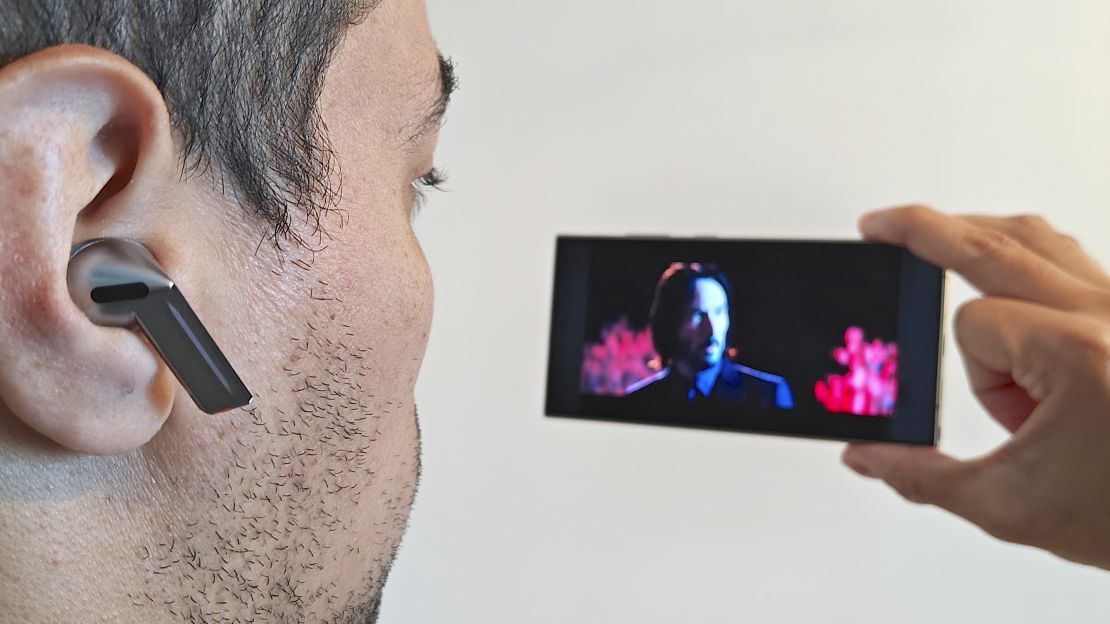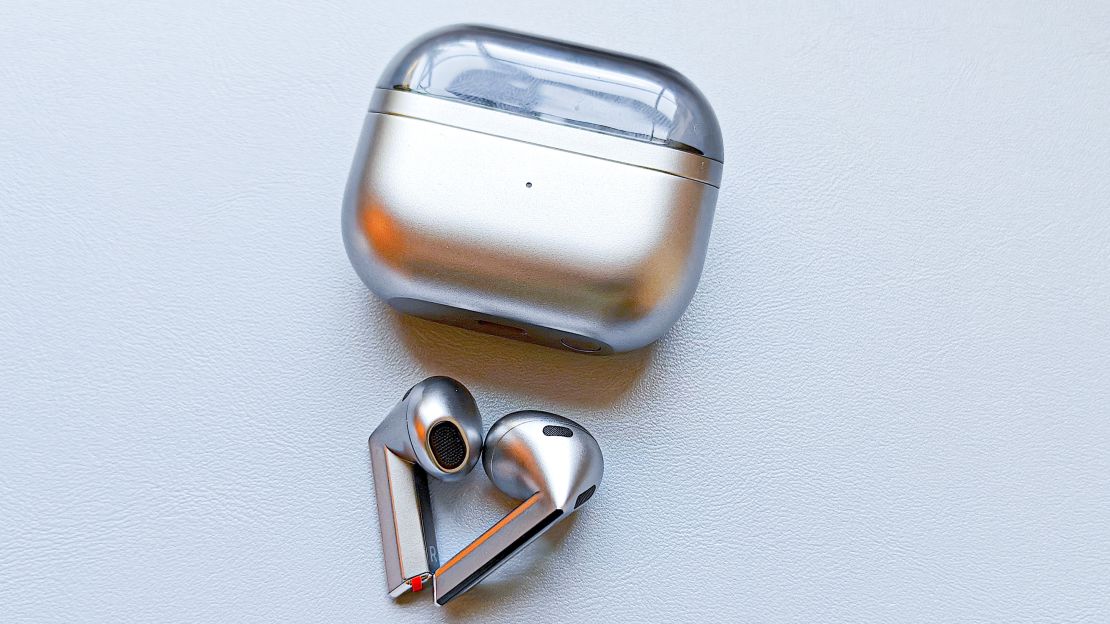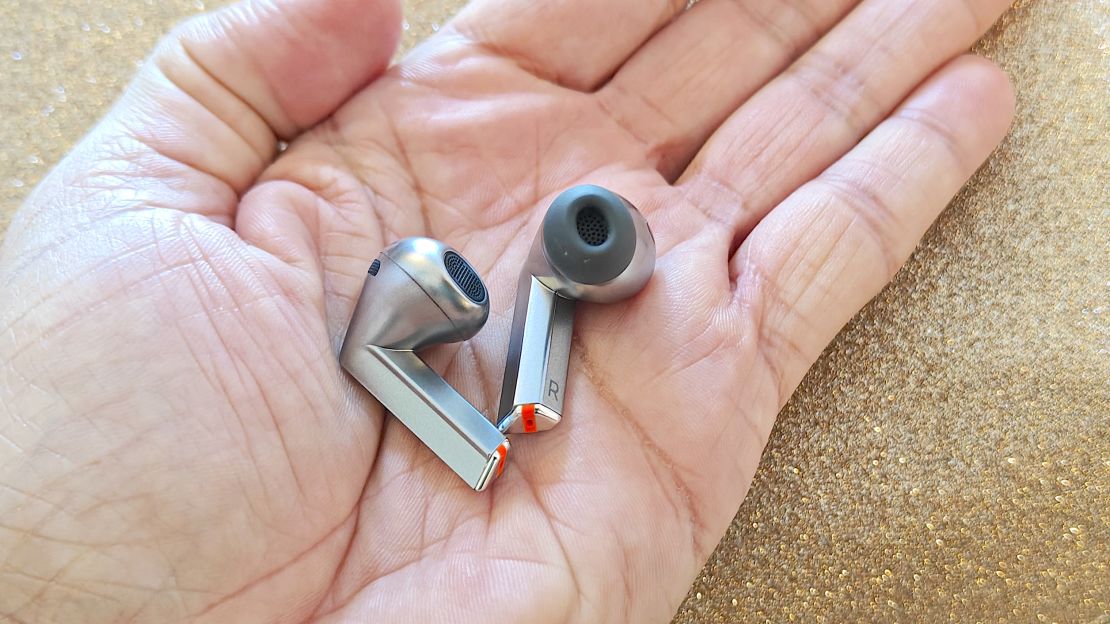Since entering the true wireless space, Samsung has been playing catch up with Apple, Bose and Sony. The company’s Galaxy Buds lineup, while applauded by critics, don’t quite have the same recognition as Samsung’s beloved Galaxy smartphones. Attempts to overthrow the category-leading AirPods Pro 2 and Sony WF-1000XM5 — two of our longtime picks for best wireless earbuds — have also fallen short.
The mobile giant needs something innovative right now, and its hoping the all-new Galaxy Buds 3 and Galaxy Buds 3 Pro are enough to get them back in the game. These two premium models have been updated with new features and an all-too-familiar aesthetic that clearly draws inspiration from Apple’s flagship buds. However, the biggest addition comes in the form of artificial intelligence, which Samsung developed certain features around to simplify usability.
Series staples such as active noise cancellation and hi-res sound continue to shine. Connectivity and ecosystem integration are highlights as well, primarily for Samsung users. Unfortunately, AI functionality isn’t as cutting edge as advertised. The blatantly copied AirPods design and middling battery life don’t serve as gripping selling points either.
Are the Galaxy Buds 3 and Galaxy Buds 3 Pro still worth pairing with your current Galaxy smartphone? Let’s find out.
These third-gen Galaxy Buds models offer many of the Pro model’s features in a more affordable package, if you’re cool with a less immersive open-ear design.

Sound has always been a force to be reckoned with on the Galaxy Buds series. These two entries carry on the tradition. Samsung’s adaptive EQ is comparable to Apple’s version on the AirPods Pro and effectively optimizes sound on the go. The designs for these Galaxy models create different listening experiences. Regardless, audio performance is elite and elevated by robust personalization features, some of which are exclusive to Galaxy users.
Using a current Galaxy smartphone will get you the best sound quality since they employ the Samsung Scalable Codec (SSC) to dynamically scale the bitrate and unveil more details in recordings with minimal latency. What I’ve heard thus far from Tidal and some of the other best music streaming services has been nothing short of fantastic.
Classics like The Beatles’ “Hey Jude” sounded serene. Instrumental separation was stellar, with every guitar strum and tambourine jingle beautifully reproduced. This brought a lively ambience to the soundstage that only true audiophile buds like the Master & Dynamic MW09 and Sennheiser Momentum True Wireless 4 typically achieve.
The transition to contemporary hip-hop tracks was even more gratifying. Megan the Stallion’s “Body” pummeled my eardrums with monstrous 808s that sounded crisp and ridiculously impactful. I had never noticed the teetering cymbals on this record; they were transparent, which is a testament to the well-balanced frequency range on both models.
The Galaxy Buds 3’s open-ear design results in minor leakage, but still produces satisfying, natural sound that surpasses the AirPods 2. The Galaxy Buds 3 Pro provide a more engrossing experience, thanks to their highly secure in-ear design with silicone tips.
Active noise cancellation (ANC) gives bass a slight boost that’s apparent when switching between the different listening modes. Samsung’s EQ has been refined with presets that complement their sound categories. There’s a low-latency Gaming mode hidden in the Labs section of the Wearable app that reduces lag when playing mobile games and watching videos. Anyone with a hearing impairment can also adjust sound balance between the left and right channels in the Accessibility setting.
Samsung’s spatial audio isn’t superior to Apple, Bose or Sony’s version. That’s not to say 360 Audio won’t make your favorite jams or TV content more entertaining. Bass and mids are amplified on the Galaxy Buds 3 Pro, and turning on headtracking will give sound effects and vocals a more immersive presence. Spatial audio performance dips on the Galaxy Buds 3.

There are three selectable noise-canceling modes: Ambient Sound, Adaptive and Active Noise Canceling. The first two modes rely heavily on Samsung’s enhanced mic array that analyzes incidental sound in real time. Ambient Sound demonstrates strong vocal capture to hear conversations clearly and picks up noises from afar for increased situational awareness. Adaptive doesn’t perform well, though I suspect the feature requires several hours (or perhaps even days) of use to reach its full potential. ANC is the way to go and handles low- and mid-frequency sounds with ease. Many household distractions (like cat meows, family chatter and kitchen appliances) went unnoticed. High-frequency sounds and white noises were audible, but none were very loud or distracting.
ANC on open-ear wireless buds doesn’t make sense since they’re designed to let you hear music and your surroundings at the same time. The Galaxy Buds 3 support the feature, however, and it’s somewhat useful. The technology reduced background noise by about 20%.
Reliable protection and wearability

It hurts to see these two models carry a lower IP rating (IP57) than the Galaxy Buds 2 Pro (IPX7). Luckily, the buds remain dust and water-resistant, and are composed of hard plastic that won’t crack if dropped on the concrete or stepped on. Build quality on the charging cases is decent. Samsung Find integration ensures you never lose either set of buds by pinpointing their location, even when offline.
Despite the different sound port designs, both versions are comfortable to wear. They’re equally pleasant on the concha and provide a stable fit.

Samsung could have duplicated many concepts from their competition. A smart case. ChatGPT compatibility. Universal spatial audio. What does it settle for? A long-stem design, which has been imitated to death and lacks ingenuity on these Galaxy models, even with the multi-angled look that gives off Tesla Cybertruck vibes.
They awkwardly stick out. The “blades,” which are just a name Samsung created to identify the multifunctional force sensors, aren’t as practical as those of the AirPods Pro 2 or OnePlus Buds Pro 2. The super-slim body makes it difficult to locate the pinch mechanism, and when it’s found, it must be pressed hard. Tactile feedback isn’t great either. At least the volume strip is functional and seamlessly adjusts volume via swipe gestures.
Only the Galaxy Buds 3 Pro come with LEDs to indicate enabled functions and pairing/power status. Each charging case has an LED in the front. Speaking of which, the cases look similar to the AirPods Pro’s curved rectangular case, except they don a dark slate grey color and translucent lid. Samsung’s previous oval bud design and miniature charging cases were far more attractive, durable and stylish.
Limited and unconvincing AI

For many, AI may be the most compelling attraction on these two releases. Galaxy AI features are automatically enabled when pairing either set of buds to a compatible Galaxy smartphone. The adaptive EQ and ANC adjust sound based on your surroundings and how you wear the earbuds. At least that’s what is advertised. I tested the Galaxy Buds 3 and Galaxy Buds 3 Pro for multiple hours during a four-day stretch and never noticed any noise reduction improvements.
Smart voice capture is also tied to AI integration and extends to a few voice features. Interpreter Mode reads and translates foreign languages in real time, but it’s only available on devices that support the latest software update (One UI 6.1.1), which as of this writing is limited to the new Galaxy Z Flip 6 and Galaxy Z Fold 6.
Bixby worked well at the start of testing and executed commands as quickly as it received them. Then it stopped working for some reason. Every time I spoke the wake-word phrase, the feature would turn on and immediately turn off. Only the AI-powered call management and playback voice commands were spot-on.
Ambient awareness features like Voice Detect functioned well, but Siren Detect wasn’t as adept. I encountered very few sirens when walking around my neighborhood wearing both sets of buds, and when I did, the buds didn’t pick up these high-frequency sounds.

Three generations in and the Galaxy Buds series continues to have a low battery problem. A full charge gets the Galaxy Buds 3 up to 6 hours and the Galaxy Buds 3 Pro up to 7 hours, depending how you use them. ANC decreases playtime by an hour and spatial audio drops it by another 1.5 hours. These are weak numbers compared to luxury rivals like the WF-1000XM5 (up to 10 hours), as well as bargain noise-cancellers like the $69 JLab JBuds Sport ANC 4 (14 hours). Each wireless charging case holds a max of 30 hours.

There is a lot to digest with Samsung’s latest true wireless creations. The greater interest lies in the more powerful Galaxy Buds 3 Pro, which dish out remarkable sound, no matter the mobile platform, along with adequate ANC and comfort. Those seeking an AirPods 2 alternative can enjoy these same hallmarks on the less expensive Galaxy Buds 3.
However, some of the key changes that Samsung implemented are more setbacks than advances. The AirPods-inspired design wouldn’t be a problem if the controls worked efficiently, and the earbud size was smaller. But it’s the heavy AI push that fails to deliver. Adaptive ANC and side features like Siren Detect need a lot of polishing, and neither of them feel like true game-changers.
AI has plenty of possibilities for wireless audio, but it’s just not executed well on the Galaxy Buds 3 and Galaxy Buds 3 Pro. Pairing either model with your new Galaxy smartphone is still the right move, but you’ll want to consider the market’s other options if you want more complete wireless earbuds.












